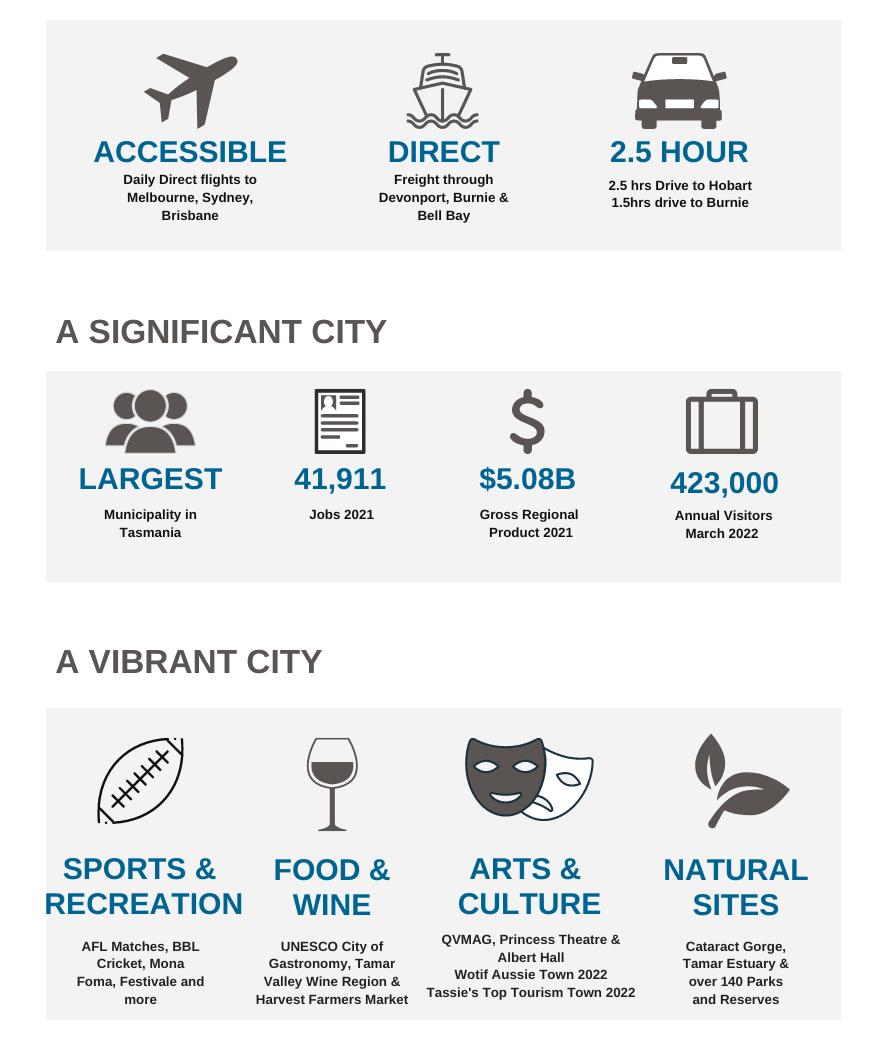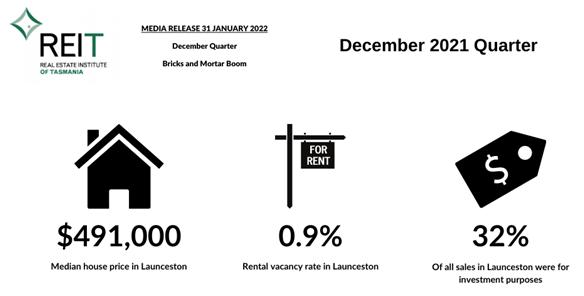
3 minute read
The Opportunity
A Connected City and Region
Launceston is Northern Tasmania’s service hub and is just one-hour’s flight from Melbourne. Australia’s first Gigabit City, Launceston is one of a very few Australian cities with fibre to the premises. The region is equipped for the digital economy with a Smart City strategy under development, a LoraWAN network, electronic product design/manufacturing and research and development capability through the University of Tasmania’s Sense T project.
Northern Tasmania has reliable air and shipping services that enable interstate and international freight and logistics, with capacity increasing to meet a predicted 50% growth in exports from tourism, agriculture, metal processing, and forestry.
The Bell Bay Industrial Precinct of 2,500 hectares has access to green hydropower which supports Bell Bay Aluminium (Rio Tinto), South 32 TEMCO manganese smelter as well as other manufacturers and engineering services. This precinct accounts for approximately 60% of Tasmania’s manufacturing exports (RDA Tasmania). Northern Tasmania produces $700M in agricultural production including an expanding wine industry as well as premium livestock and horticultural produce (REDS 2019).
Launceston and Northern Tasmania are fast becoming a tourism hotspot of Australia with a mix of heritage architecture, inner city fine dining and retail, premium wine and food as well as recreational pursuits such as world class mountain bike trails, golf courses and Cataract Gorge attracting tourists from around the globe.
An Innovative, Productive City and Region
Northern Tasmania has an international reputation for the quality of its food and beverages. Innovative farmers, food manufacturers, wine and other beverage producers make the most of Northern Tasmania’s rich soils, mild cool climate, reliable rainfall and extensive irrigation infrastructure. Northern Tasmania accounts for 45% of Tasmania’s farmland, and 60% of Tasmania’s wine producing area (REDS 2019).
The following initiatives are an example of the work currently underway in the region through the Agricultural sector:
• Food Innovation Hubs
• FermenTasmania
• National food research capacity through the Centre for Food Innovation, Testlab 4.0, and a Microwave Assisted Thermal Sterilisation Unit (MATS)
• City of Gastronomy Designation (UNESCO Creative Cities Certification)
The Australian Maritime College attracts students from all over the world to study shipping, naval architecture, maritime engineering and logistics. It is also home to the Blue Economy Cooperative Research Centre, a world leader in maritime research. A Defence Innovation Precinct is also planned to commence construction on the Australian Maritime College site whilst the Launceston City Deal has supported the University move adjacent to the CBD and an improved education focus.
A Liveable City and Region
Launceston is a medium-sized regional city, with a rich history where the City meets nature through the Cataract Gorge and surrounding wilderness areas. Launceston enjoys facilities and advantages of a larger city including a range of education facilities, hospital, airport, sports facilities, museums, cultural facilities, parks and attractions.
The Northern Tasmania region has established national parks, world-class walking and bike trails, famous Bay of Fires beaches, and a vibrant arts scene.
Northern Tasmania offers worldclass education. The University of Tasmania is in the top 2% of universities worldwide, and offers courses aligned to the region’s strengths (REDS 2019).
Recent Population Trends and Housing
As noted earlier in this Strategy, Launceston has had a period of low population and economic growth. Due to poor growth between 2014 and 2019, the 2019 projections were downgraded for the Launceston LGA from approximately 74,000 to 70,000 in 2037 (The Tasmanian Government Department of Treasury and Finance). Since the onset of Covid-19 this trend has started to shift. Launceston has experienced positive population growth in 2020 at 1.15% for the year or a net increase of 779 people (economy .id). Importantly, the growth rate is nearing the Northern Tasmania Development Corporations NTDC Population Taskforce Strategy target of 1.2% annual growth. Early indications suggest that the positive population growth of 2020 has continued in to 2021. The Regional Movers Index is powered by CBA data from relocations amongst its 10 million customers (Regional Movers Index). Launceston was ranked as fourth for regional migration nationwide by annual growth, with a 34% increase in annual growth from capital cities.

This recent growth has impacted the local housing market. Recent data from the Real Estate Institute of Tasmania shows that Launceston is currently experiencing a housing price boom and an extremely tight rental market. The City of Launceston understands that having a sustainable supply of suitable housing is a fundamental element of community stability and economic growth. As the planning authority for the Launceston LGA, the City of Launceston will continue to monitor these trends to ensure this information is factored into planning projections for available land.











